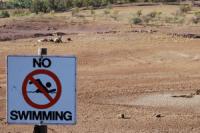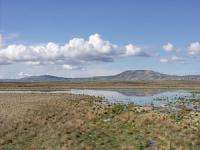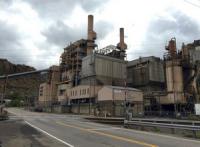-
AgTech innovator raises $7.5 million to help develop precision agriculture
Today, the Ag industry loses more than $300 billion each year due to crop diseases and pests. Pests and diseases can destroy crops and devastate farmers’ agricultural yield, but chemical overuse comes with its own set of challenges, including pesticide-resistant disease strains. Meanwhile, rising temperatures and increasing levels of carbon dioxide create more challenges for farmers as crop pests and disease thrive in hot, CO2-rich environments. Taranis, a precision agriculture intelligence platform, announced it has closed a $7.5 million Series A round of financing. Taranis says it aims to lead the digital farming revolution by giving farmers around the globe the ability to predict and prevent detrimental threats to their crops—and bottom line.
-
-
Dangerous mix: Climate change, tornadoes, and mobile homes
Tornadoes and mobile homes do not mix to begin with, but throw in the volatility of climate change and the potential for massive property damage and deaths is even higher in coming decades. The number of mobile homes in the United States has risen dramatically in the past 60 years, to about 9 million currently. Meanwhile, the United States is the most tornado-prone country in the world, with an average of 1,200 twisters per year.
-
-
Trade-offs between short- and long-term policies dealing with greenhouse gases
Scientists and policymakers use measurements like global warming potential to compare how varying greenhouse gases, like carbon dioxide and methane, contribute to climate change. Yet, despite its widespread use, global warming potential fails to provide an accurate look at how greenhouse gases affect the environment in the short and long-term, according to researchers. The researchers argue that because global warming potential calculates the warming effects of greenhouse gases over 100 years, they discount the effects of any greenhouse gas that disappears from the atmosphere after a decade or two. This masks the trade-offs between short- and long-term policies at the heart of today’s political and ethical debates.
-
-
Natural flood-prevention measures valuable, but not “a silver bullet”
Natural measures to manage flooding from rivers can play a valuable role in flood prevention, but a lack of monitoring means their true potential remains unclear, researchers say. Such measures, including river restoration and tree planting, aim to restore processes that have been affected by human activities such as farming, land management and house-building.
-
-
Louisiana’s westernmost, low-lying regions on track to drown under sea level rise
Without major efforts to rebuild Louisiana’s wetlands, which serve as bulwarks against waves and rising seas, the state’s coast has little chance of withstanding the accelerating rate of sea level rise, a new study concludes. Wetlands can provide crucial protection from rising seas, especially in Louisiana’s low-lying westernmost areas, but the habitats have faced years of decline, mostly from coastal erosion. The erosion results in part from levees that have been built along the Mississippi River. The levees block mud deposits that flow to and underlie much of the Louisiana coast. The land, cut off from new building material, begins to sink.
-
-
Scientists test links between extreme weather and climate change

After an unusually intense heat wave, downpour or drought, climate scientists inevitably receive phone calls and emails asking whether human-caused climate change played a role. In the past, scientists typically avoided linking individual weather events to climate change, citing the challenges of teasing apart human influence from the natural variability of the weather. But that is changing. “Over the past decade, there’s been an explosion of research, to the point that we are seeing results released within a few weeks of a major event,” says one expert.
-
-
Sea levels could rise by more than three meters: New study
Global sea levels could rise by more than three meters – over half a meter more than previously thought – this century alone, according to a new study. The projections explicitly accounted for three scientific uncertainties – the speed at which the Antarctic ice sheet is going to melt, the speed at which the ocean is warming up, and the amount of emitted greenhouse gases over the twenty-first century.
-
-
Western U.S.: Loss in water from melting snowpack due to human influence

Peak runoff in streams and rivers of the western United States is strongly influenced by melting of accumulated mountain snowpack. A significant decline in this resource has a direct connection to streamflow, with substantial economic and societal impacts. An international team of scientists has found that up to 20 percent loss in the annual maximum amount of water contained in the western United States’ mountain snowpack in the last three decades is due to human influence.
-
-
Yes, we can do “sound” climate science even though it’s projecting the future
Increasingly in the current U.S. administration and Congress, questions have been raised about the use of proper scientific methods and accusations have been made about using flawed approaches. This is especially the case with regard to climate science, as evidenced by the hearing of the House Committee on Science, Space and Technology, chaired by Lamar Smith, on 29 March 2017. Chairman Smith accused climate scientists of straying “outside the principles of the scientific method.” Smith repeated his oft-stated assertion that scientific method hinges on “reproducibility,” which he defined as “a repeated validation of the results.” He also asserted that the demands of scientific verification altogether preclude long-range prediction. The kinds of statements are misguided. They show a woeful ignorance about science and how it works, and in particular about climate science. Consequently, they ignore sound advice on how to best plan for the future.
-
-
Planet’s response to greenhouse gas emissions: Models, observations not so far apart
How hot our planet will become for a given amount of greenhouse gases is a key number in climate change. As the calculation of how much warming is locked in by a given amount of emissions, it is crucial for global policies to curb global warming. It is also one of the most hotly debated numbers in climate science. Observations in the past decade seem to suggest a value that is lower than predicted by models. But a University of Washington study shows that two leading methods for calculating how hot the planet will get are not as far apart as they have appeared.
-
-
BP oil spill did $17.2 billion in damage to natural resources

The 2010 BP Deepwater Horizon oil spill did $17.2 billion in damage to the natural resources in the Gulf of Mexico, a team of scientists recently found after a six-year study of the impact of the largest oil spill in U.S. history. This is the first comprehensive appraisal of the financial value of the natural resources damaged by the 134-million-gallon spill.
-
-
Clean power planning

With a single executive order issued at the end of March, the Trump administration launched a robust effort to roll back Obama-era climate policies designed to reduce U.S. carbon dioxide (CO2) emissions. Chief among those policies is the Clean Power Plan, which targets coal and natural gas-fired electric power plants that account for about 40 percent of the nation’s CO2 emissions. Private and public-sector investors may see the executive order as a green light to double down on relatively cheap fossil fuels and reduce holdings in more costly, climate-friendly, non-carbon generation technologies such as wind, solar and nuclear. But they may want to think twice before making such transactions – and a new study details why it’s prudent to invest in carbon-free electricity now.
-
-
Sustainability’s threat to fossil fuel industry is only going to increase
Commercial activity in fossil fuels is increasingly at odds with global actions to reduce the threat of climate change. Burning coal, oil, and natural gas is responsible for two-thirds of humanity’s emissions of greenhouse gases, and yet provides more than 20 percent of GDP in two dozen nation states. By Citicorp’s estimate, current commitments to reduce these emissions could mean forgoing $100 trillion in fossil fuel revenues by 2050 — representing a huge disruption to global affairs, undermining national budgets and corporate balance sheets while exposing stakeholders, including pension holders and ordinary citizens in resource-exporting states, to myriad risks.
-
-
Latest science on sea level rise projections: In support of California policy guidance
An estimated 75 percent of California’s population lives in coastal counties. Sea-level rise, already underway, threatens hundreds of miles of roads and railways, harbors, airports, power plants, wastewater treatment plants, coastal wetlands, beaches, dunes, bluffs, and thousands of businesses and homes. In a comprehensive analysis of the factors that affect how much the ocean will rise along California’s coast in coming decades, a seven-member team of experts has provided the state with a report on the best-available sea-level rise science — including recent scientific advances on the role of polar ice loss.
-
-
Cities inland could be reshaped by migration from sea-level rise
When Hurricane Katrina struck Louisiana in 2005, cities inland saw an influx of evacuees escaping the storm and its aftermath. Now, a new study predicts that this could happen again as a result of sea-level rise. Researchers estimate that approximately 13.1 million people could be displaced by rising ocean waters, with Atlanta, Houston, and Phoenix as top destinations for those forced to relocate. The study is the first attempt to model the destination of millions of potentially displaced migrants from heavily populated coastal communities.
-
- All
- Regional
- Water
- Biometrics
- Borders/Immig
- Business
- Cybersecurity
- Detection
- Disasters
- Government
- Infrastructure
- International
- Public health
- Public Safety
- Communication interoperabillity
- Emergency services
- Emergency medical services
- Fire
- First response
- IEDs
- Law Enforcement
- Law Enforcement Technology
- Military technology
- Nonlethal weapons
- Nuclear weapons
- Personal protection equipment
- Police
- Notification /alert systems
- Situational awareness
- Weapons systems
- Sci-Tech
- Sector Reports
- Surveillance
- Transportation
Advertising & Marketing: advertise@newswirepubs.com
Editorial: editor@newswirepubs.com
General: info@newswirepubs.com
2010-2011 © News Wire Publications, LLC News Wire Publications, LLC
220 Old Country Road | Suite 200 | Mineola | New York | 11501
Permissions and Policies
Editorial: editor@newswirepubs.com
General: info@newswirepubs.com
2010-2011 © News Wire Publications, LLC News Wire Publications, LLC
220 Old Country Road | Suite 200 | Mineola | New York | 11501
Permissions and Policies
